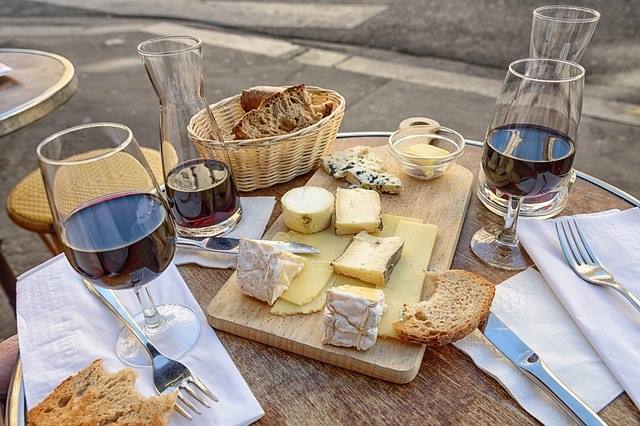
Generally, in life, enjoying things in moderation will give you the most pleasure. This is certainly true for wine, where it’s important to recognize how your daily or weekly habits can affect you. Knowing how many calories are in a glass of your favorite wine will help you decide whether you should cut back, or seek out a new favorite.
How to Determine Calories in Red Wine and White Wine
How many calories are there in red wine? What about white wine? It’s true that there are slightly fewer calories in white wine versus red wine, but the difference won’t make a significant impact unless you’re comparing something like a glass of Champagne to a glass of Ruby Port.
The difference comes from the amount of residual sugars and the alcohol content. The general rule is that alcohol has more calories per unit than sugar does, with alcohol at 7 calories per gram and sugar at 4 calories per gram.
Since alcohol has more calories, if you're looking for a lower-calorie wine, you’d do better to choose one with a lower alcohol content. The same thinking applies to dry versus sweet wines; you’d be better off choosing a dry wine with fewer residual sugars.
What happens when you combine the two factors, though? That’s when things get a bit more complicated.
Dry wines with lower alcohol content will have fewer calories than sweet wines with higher alcohol content, but sweet wines with lower alcohol content will usually have fewer calories than dry wines with higher alcohol content.
You also need to factor in serving size. The average serving size is 5 ounces for most wines, but fortified wines like port and sherry come in 2-oz servings due to their higher alcohol content. These wines are often sweeter, so the reduced size also keeps you from drinking too much sugar.
A Few Calculations
To determine the alcohol calories in wine, you’ll need to do a few simple calculations. First, take the alcohol content and multiply it by the number of ounces in the serving. Then multiply that number by 1.6 to get the serving's alcohol calories.
Alcohol by Volume (ABV) Percent x Ounces x 1.6 = Total Alcohol Calories
For example, 12.5 % ABV x 5 ounces x 1.6 = 100 calories from alcohol.
If your serving comes in milliliters, to perform this calculation, you need to convert mL to oz. A standard wine bottle has 750mL or 25.4 oz, so 5 ounces of wine is the same as roughly 150mL of wine.
If you have 125mL of wine, multiply that number by 25.4 and divide by 750 to get the equivalent in ounces. In this case, you’re consuming 4.2 ounces of wine.
Remember that you can’t count calories by alcohol content alone, since wines have varying levels of residual sugar. These calculations are most accurate when applied to dry wines. Off-dry, semi-sweet and sweet wines have more calories from sugar. It’s important to think about the type of wine you’re drinking.
Wine Types: Calories by the Glass and by the Bottle
In general, sweeter wines like Sauternes, Moscato and sweet Riesling have more calories than drier wines like Nebbiolo, Chablis and Cabernet Franc.
If you’re planning to enjoy a glass of dry white wine, you’re looking at an average of 120 calories for a 5-oz serving. Champagne is lower in calories, about 100 per 5 ounces, while Chardonnay has about 123 calories. For a sweet white wine, the caloric content will be closer to 160 calories per 3.5-oz serving.
For the calories in a glass of red wine, you’re looking at about 125 calories, with wines like Zinfandel at about 129 calories per 5 ounces and wines like Pinot Noir having about 121 calories per 5 ounces.
Fortified wines like port are sweeter and have much higher alcohol content, so it’s no surprise that they clock in at about 92 calories for every 2 ounces. That would be 230 calories if you drank 5 ounces!
To determine the calories in a bottle of red wine or white wine, multiply the calories in a 5-oz serving by 5. For example, that bottle of Zinfandel with 129 calories per 5 ounces will have about 645 calories in the full bottle (129 x 5 = 645).
Does Drinking Wine Lead to Weight Gain?
Unless you’re drinking a lot of wine, and that really does mean a lot, you won't experience noticeable weight gain from wine alone. However, wine does affect the neurons in the brain that are linked to hunger.
According to a UK study published in “Nature Communications,” the alcohol in wine activates the brain’s AgRP neurons and convinces them that the body is starving. These messages circulate around the hypothalamus and send signals for you to eat a lot to prevent starvation. You likely weren’t hungry before you drank your wine, but now you are!
If you give in to those hunger cravings, you could end up gaining some weight, simply because you’re eating more food than your body requires.
What’s a Healthy Daily Amount of Wine?
The American Heart Association recommends no more than one drink a day (5 ounces of wine) for women and two drinks for men.
One of the main reasons for the difference comes from biochemistry. Women don’t have as much dehydrogenase enzyme to break down alcohol, leading to as much 30 percent more alcohol traveling into the bloodstream.
However, drinking wine in moderation is perfectly healthy. Whether you’re sharing a meal with friends or on a romantic date, enjoying a glass of wine is a great way to end your day.
If you’d like help choosing the best wines for your healthy lifestyle, reach out to us at JJ Buckley Fine Wines. Our professional consultation services can help you find the perfect wine for that upcoming dinner party or for your collection.